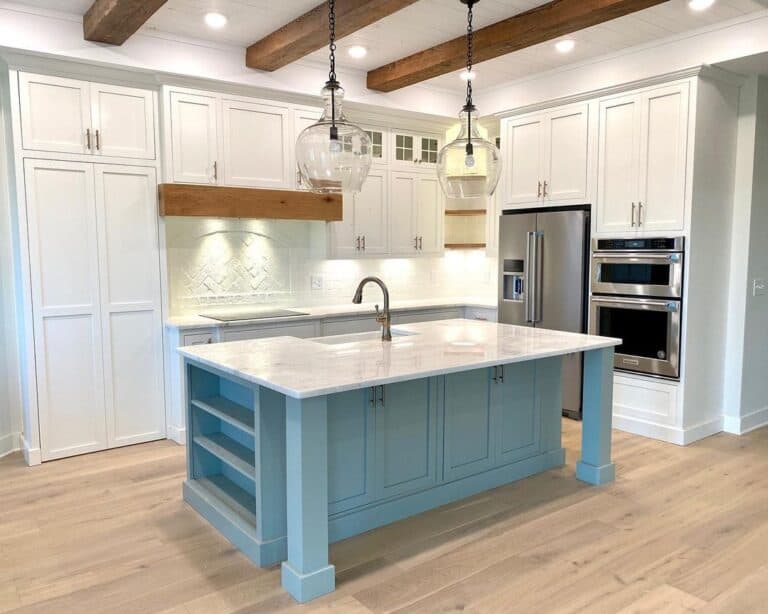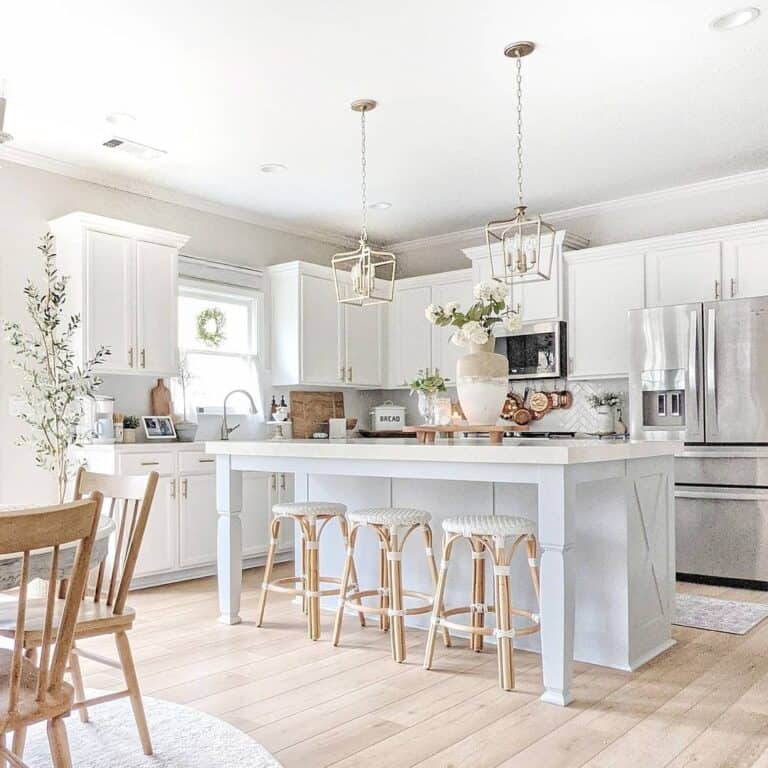Boost Your Space with Fashionable Legs For Kitchen Island Styles
Boost Your Space with Fashionable Legs For Kitchen Island Styles
Blog Article
Vital Aspects to Think About When Selecting Legs For Kitchen Island
Choosing the ideal legs for a cooking area island entails a mindful evaluation of multiple factors that can considerably influence both functionality and visual allure. As we check out these components, it comes to be clear that each choice can have far-ranging ramifications for the overall cooking area experience.
Product Options
When picking legs for a kitchen island, recognizing the numerous material options is important for attaining both visual appeal and structural integrity (Legs For Kitchen Island). The selection of material substantially influences not just the toughness of the island however likewise its total layout and performance
Metal legs, typically made from stainless steel or wrought iron, contribute a contemporary and industrial feeling while making certain toughness and stability. These materials are resistant to put on and can support substantial weight, making them suitable for bigger islands.
Another alternative is engineered products, like MDF or plywood, which can be a lot more affordable while still providing a range of finishes. Nevertheless, they may not supply the exact same level of stability as solid timber or steel. Materials such as acrylic or glass can create a modern look, though they might call for added support to make certain security.
Ultimately, the selection of material for kitchen island legs must straighten with the wanted capability and the overall style of the kitchen area.
Design And Style

When thinking about style, the shape and coating of the legs are important. Tapered legs can give a sense of lightness and elegance, while thicker, more durable legs can convey toughness and stability. Furthermore, the finish-- be it painted, stained, or all-natural-- must complement the kitchen cabinetry and counter top products to produce a unified appearance.
Additionally, the layout of the legs can additionally show individual preference. Customized or decorative legs, such as those including complex makings or unique geometric forms, can offer as centerpieces, adding character and individuality to the kitchen area. Ultimately, the ideal option will certainly not just boost functionality however also boost the visual charm, making the kitchen area island a standout function of the home.
Elevation Factors To Consider
Picking the proper height for cooking area island legs is essential, as it directly affects both functionality and comfort. The basic elevation for a cooking area island usually varies from 36 to 42 inches, aligning with typical countertop elevations. A 36-inch height is excellent for food preparation and cooking, permitting comfy use kitchen appliances and tools. Alternatively, a height of 42 inches is commonly chosen for islands meant for bar seats, fitting taller stools and using a laid-back dining experience.

It is also necessary to account for users' choices and heights. Personalizing go now the elevation can make certain a comfy experience for all family members, making the kitchen area island a more functional and satisfying room.
Weight Assistance
Making sure ample weight support for cooking area island legs is important for both safety and performance. The kitchen area island often offers multiple objectives, consisting of cooking, eating, and extra storage space, requiring a robust support framework. When picking legs, it is vital to consider the total weight capacity required based on the island's meant usage and the products that will be placed on it.
The choice of product for the legs plays a substantial function in their weight-bearing capabilities. Strong timber, metal, and heavy-duty compounds typically offer exceptional strength contrasted to lighter materials. Additionally, the design of the legs-- whether they are right, tapered, or have a pedestal form-- can affect their ability to distribute weight efficiently across the framework.
Constantly consult the manufacturer's requirements regarding load restrictions to make certain that the legs look at this site can sustain the designated weight without jeopardizing safety. In recap, picking kitchen island legs with appropriate weight assistance is crucial for developing a secure and useful culinary room.
Installation and Upkeep
Proper installation and upkeep of cooking area island legs are vital for ensuring long life and security. To begin, it is vital to follow the manufacturer's guidelines during installation. This often includes safeguarding the legs to the island base utilizing suitable bolts, making certain that the legs are level and straightened. Making use of a level tool can aid prevent tottering and improve the general visual charm of the kitchen area island.
Once set up, normal upkeep is necessary to protect the stability and look of the legs - Legs For Kitchen Island. For wood legs, periodic cleaning with a damp cloth and application of appropriate timber polish can prevent moisture damage and maintain their surface. Steel legs might need a mild cleansing service to eliminate grease and gunk, complied with by a dry towel to avoid corrosion formation
Additionally, check the legs consistently for indicators of wear or damage, such as fractures or loosened joints. Tightening screws or screws as needed can additionally extend the life expectancy of the legs. By adhering to these setup and upkeep practices, Find Out More property owners can guarantee that their kitchen island continues to be strong and visually appealing for many years ahead.
Final Thought

Aesthetic coherence is critical in choosing the design and design of legs for a cooking area island, as these elements substantially influence the general atmosphere of the room. Conical legs can supply a feeling of agility and style, while thicker, much more durable legs can communicate stamina and stability.Selecting the suitable height for kitchen island legs is essential, as it straight impacts both functionality and convenience. In recap, selecting cooking area island legs with ample weight support is necessary for producing a practical and secure cooking room.
In final thought, selecting legs for a kitchen area island necessitates careful consideration of various elements, including product alternatives, style, height, weight assistance, and installation.
Report this page